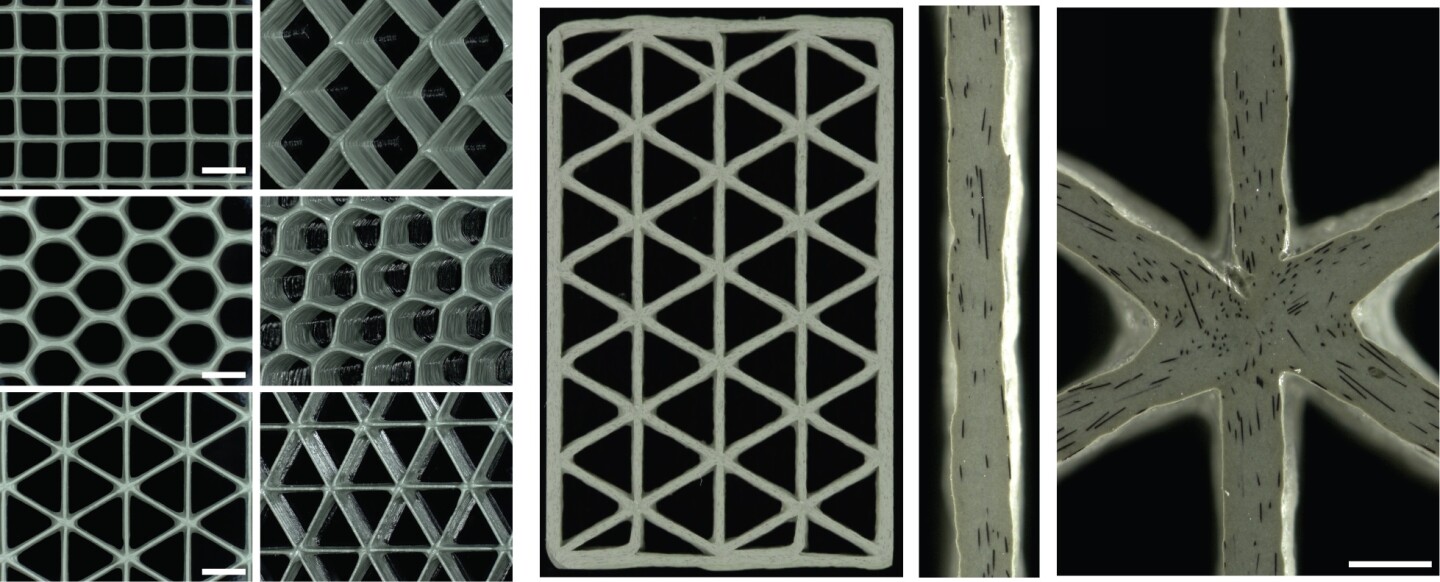Reseachers at Harvard University have developed a way to 3D-print a cellular composite with record lightness and stiffness using an epoxy resin. This marks the first time that epoxy is used for 3D-printing, and the advance could lead to the development of new lightweight architectures for more efficient wind turbines, faster cars, and lighter airplanes.
If you take all of the materials known to man, whether natural or man-made, and observe their relative properties, you'll soon find a very clear pattern: density and strength always seem to go hand-in-hand. The very light foams are generally extremely weak, and on the other end of the spectrum, the heavy materials like steels and other metals are among the strongest we know.
There are, however, a few outliers. One such example is balsa wood, which has a density as low as 40 kg per cubic meter (2.5 lb per cubic foot) but is still very strong, thanks to a microscopic structure that features a highly effective mix of cellulose and lignin fibers. Balsa wood is therefore used in applications where light but strong structures are critical, from the blades in wind turbines to the chassis of model airplanes and helicopters. There is however a serious supply problem, in that over 95 percent of the world reserves of balsa wood comes from a single country – Ecuador.
Scientists at Harvard have now come up with a way to manufacture a cellular composite that's even better than balsa wood, doing away with the occasional structural defects in the wood that can make it less reliable as a building material.
The researchers took inspiration from the microscopic structure of balsa, which is mostly hollow and in which only the cell walls are carrying the load. Their built their new composite using an epoxy-based resin containing nanoclay platelets to increase viscosity, as well as two types of fillers – silicon carbide "whiskers" and discrete carbon fibers.

One very interesting feature is the fact that the researchers can control the exact stiffness of the material by changing the orientation of the fillers as needed. Orienting the silicon carbide whiskers perpendicularly to the direction which will face the most load makes the material stronger – for the same reason that it's easier to chop wood longitudinally and not perpendicularly to its fibers.
This tunable property means that designers can digitally integrate into the composition the stiffness and toughness of an object from the very beginning, and have it comply with the desired specifications.
According to principal investigator Prof. Jennifer A. Lewis, their research is a significant step because it paves the way for 3D-printing using materials, such as epoxies, which can be used for structural applications, as opposed to the thermoplastics that your standard 3D printer uses. Using this resin, Lewis and colleagues obtained composites that are as stiff as wood, up to 20 times stiffer than commercial 3D-printed polymers, and twice as strong as the strongest printed polymer composites up to that point.
Applications for this technology could include more efficient wind turbines and perhaps innovative architecture for building lighter but safe cars that increase mileage.
A paper describing the advance appears in the journal Advanced Materials.
Below, you can watch a short clip of the composite being printed.
Source: Harvard University








